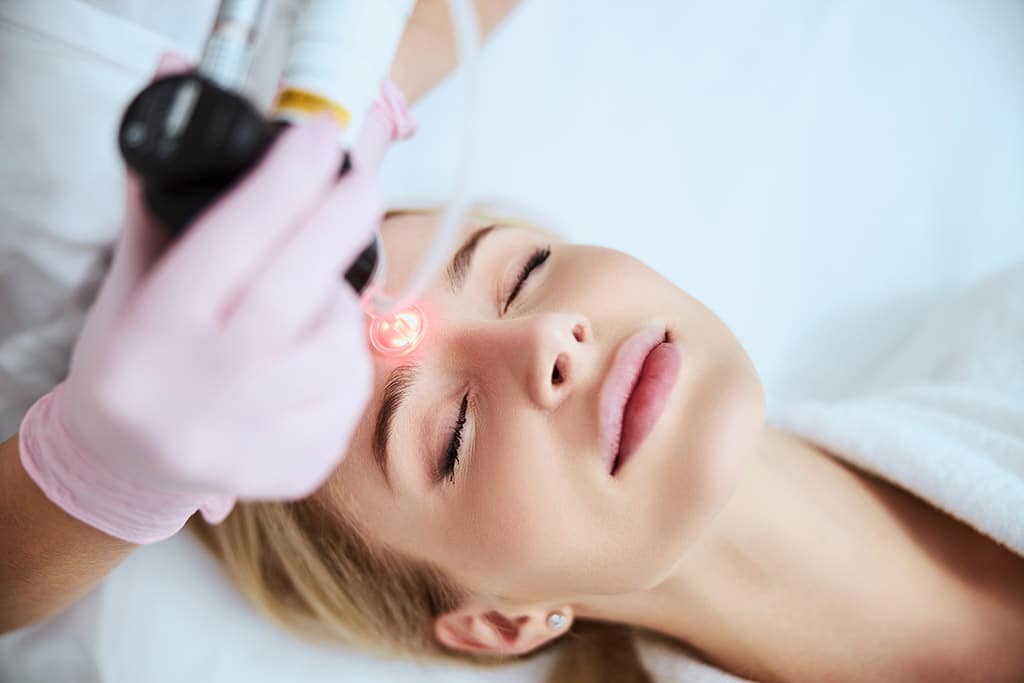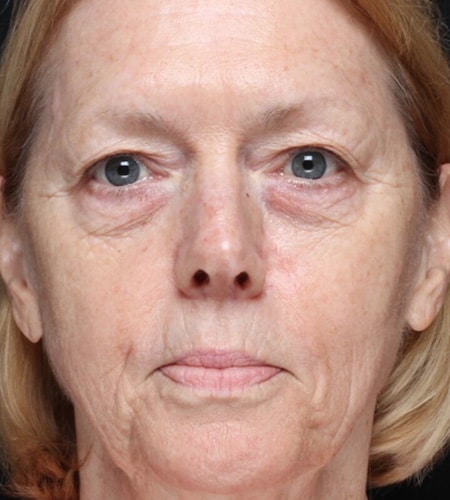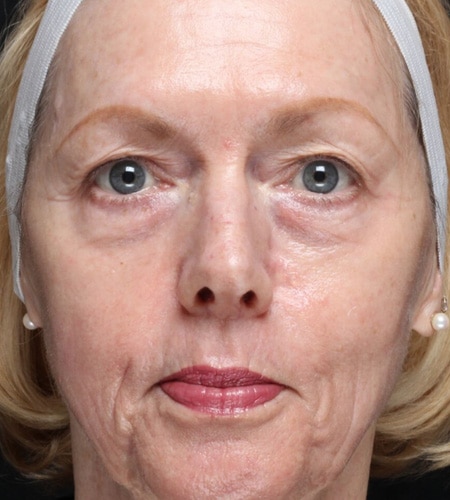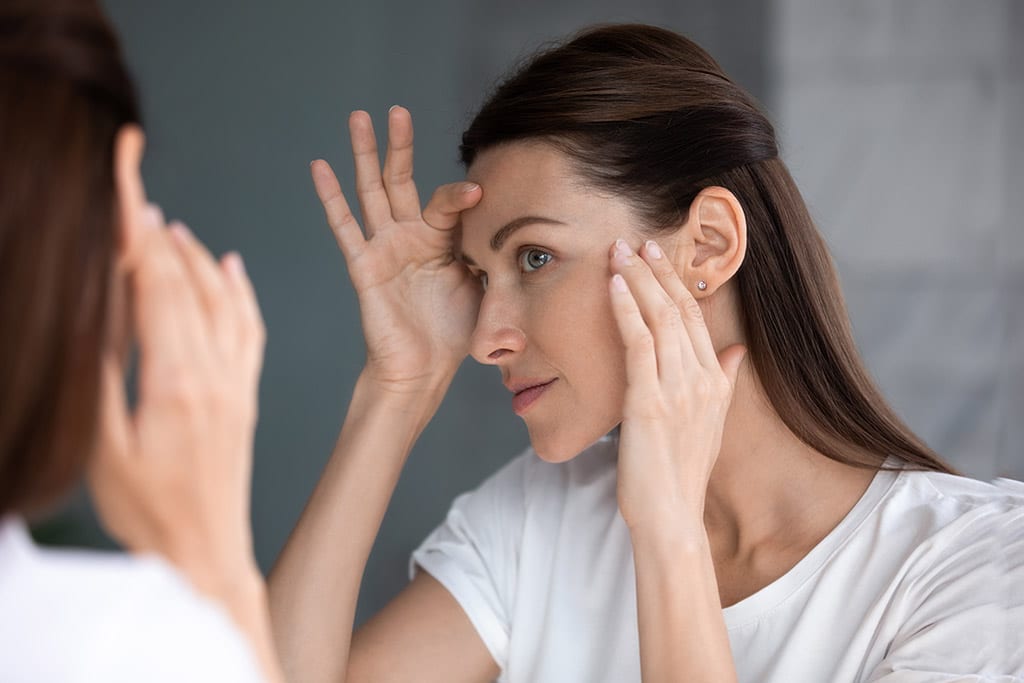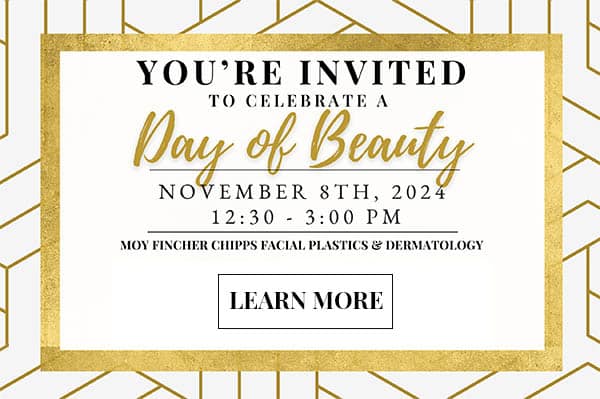What is Fractionated CO2?
Moy-Fincher-Chipps Facial Plastics and Dermatology has a variety of state-of-the-art anti-aging procedures to rejuvenate your appearance. Laser skin resurfacing with the Fractional Carbon Dioxide (CO2) Laser is one of the most effective procedures to improve skin quality and texture, while reducing fine and moderately deep lines. Because CO2 laser resurfacing relies on stimulating collagen synthesis, results are very impressive and more natural appearing than when relying on injectable fillers alone.
More specifically, fractionated CO2 laser resurfacing yields dramatic improvement in skin tone and texture; evens out pigmentation and eliminates sunspots, as well as smoothes lines, including those around the mouth and eyes. By physically removing the top layers of damaged skin, CO2 laser resurfacing also has medical benefit, removing pre-cancers and stimulating growth of healthier younger skin.
Because fractionated CO2 laser resurfacing targets lines, texture, tone, and brown spots, it’s used to globally rejuvenate the skin. It corrects color problems, eliminates fine lines and tightens the skin, giving the entire face a younger, refreshed appearance. Although it is most often used to treat the face, the CO2 laser can be used to improve neck, chest, arms, and hand skin. It is also frequently combined with surgical lifting procedures. If a facelift or neck lift is performed alone, the skin often doesn’t match the newer lifted appearance, making it look “done.” By rejuvenating the skin at the same time as surgery, the final result is a much more natural. The laser also beautifully softens and eliminates vertical lines around the mouth and tightens eyelid skin, which no surgical or injectable filler procedure can accomplish well.
How Does it Work?
In the 1990s, fully ablative CO2 laser resurfacing was the only technology available, and because this laser removed the entire skin’s surface at once, healing was prolonged and there was a higher chance of scarring or permanent pigmentary changes after treatment. More recently, fully ablative devices have been replaced with fractionated devices that offer both a faster recovery and fewer side effects. The fractionated CO2 laser works by focusing microscopic beams of light into the skin in a grid pattern. Because the laser targets water, a major component of the skin, it immediately vaporizes tissue when fired. Vaporized tissue removes brown spots and sun damage, and the resulting micro-wounds created by the laser stimulate a wound healing process that leads to collagen synthesis. Ultimately, this smoothens lines and tightens skin. Because there are small areas of “normal” skin between the micro wounds, healing is accelerated. Typically, pink new skin is visible 5-10 days after the procedure.
Who is a Good Candidate?
Healthy patients with realistic expectations who are seeking total skin rejuvenation or treatment of scars from surgery or acne are excellent candidates for fractionated CO2 laser resurfacing. Patients with active inflammatory skin conditions may require treatment of these conditions before lasering, and those with very dark skin are not good candidates because of a risk of changing the skin’s native color.
Your Consultation?
During your evaluation, your board-certified dermatologist will review your medical history and medications as well as evaluate your skin and discuss your expectations. Certain medical conditions and medications can increase procedure risks and recovery time. If you smoke, it is best to stop or reduce your smoking before treatment as smoking can slow the recovery process. We may also recommend prophylactic anti-viral medication to prevent any cold sore outbreaks after your procedure.
Fractionated CO2 Applications
Fractional CO2 laser resurfacing is the gold standard for rejuvenation of aged and damaged skin. The laser’s intense light beam safely penetrates the skin down to the dermis to rejuvenate aging and damaged skin without invasive surgery.
How Does Skin Age?
Collagen is the substance that gives the skin strength and elasticity and plumps the skin, keeping it tight and smooth. After age 20, we produce about 1% less collagen every year which leads to thinner and more fragile skin and wrinkling.
In addition to aging, years of sun exposure and environmental damage accelerate collagen loss and cause the skin to take on a rough texture and discolorations like sun and age spots and freckles form. Sun damage can cause skin cancer and precancerous lesions called actinic keratoses which are scaly, crusty growths. Factional CO2 laser treatment can help to rebuild collagen and remove discolorations, lines and wrinkles, and improve the tone and texture of the skin.
How Does the Fractional CO2 Laser Work?
The fractional CO2 laser breaks up the laser bean into microscopic beams of laser energy to create tiny holes in the skin that go down to the dermis where collagen is made. The laser energy stimulates the production of new collagen. As your body generates new collagen, deep lines and wrinkles smooth out, and the skin tightens. The old damaged skin is vaporized, and healthy new skin replaces the damaged skin damage as you heal. This refines the skin’s texture, further smooths line and wrinkles, eliminates sun damage, discolorations, scarring and even precancerous lesions on the face, neck and chest, arms and hands. Treatment is fully customizable to your needs.
Fractional CO2 laser resurfacing is available to treat:
However, this laser cannot treat dilated blood vessels and red splotchy neck discoloration.
Moy, Fincher and Chipps is the leading cosmetic surgery practice in Beverly Hills, Encino and Torrance. They have a variety of lasers that target the hallmarks of aging and sun damage. Schedule an appointment to discuss your concerns. Our board-certified dermatologists and dermatologic surgeons are dedicated to personalized patient care. They will create a customized anti-aging program for you employing the fractional CO2 laser and other advanced laser technologies to restore and rejuvenate your appearance.
Related Posts
The skin uses sunlight to help manufacture vitamin D, which is important for normal bone formation. But sometimes its ultraviolet light can be very detrimental. Within the skin’s epidermal (outer) layer are cells that contain the pigment melanin. Melanin protects skin from the sun’s ultraviolet rays, which can burn the skin, and over time, could…
Fractionated CO2 laser resurfacing is one of the most effective procedures available for skin rejuvenation. Fractionated CO2 laser resurfacing relies on stimulating collagen synthesis, producing beautiful and more natural results. Fractionated CO2 laser resurfacing works by removes layers of skin tissue to help reduce or eliminate skin discoloration, age spots, fine lines, wrinkles, scarring, skin…
The hallmarks of youth are smooth, plump, elastic, and glowing skin. Collagen is a structural component of the skin that provides support and gives youthful shape and contour. The radiance and glow of youth are the result of cell turnover and renewal, and light reflecting off smooth skin. Increased blood flow also contributes to glowing…
We know skin changes as you age. How you care for your skin should change as well. What worked in one decade may not address your needs in the next, and how well you take care of your skin when younger will determine what interventions will be most appropriate when you’re older. A combination of…
At Moy, Fincher, Chipps Facial Plastics and Dermatology in Beverly Hills, CA, our board-certified, fellowship-trained dermatologists can dramatically improve your skin with Fractionated Carbon Dioxide (CO2) laser resurfacing. This laser allows precise removal of aged, damaged skin, layer by layer, to uncover softer, smoother, and younger-looking skin. Laser skin resurfacing effectively treats fine lines, deep…

